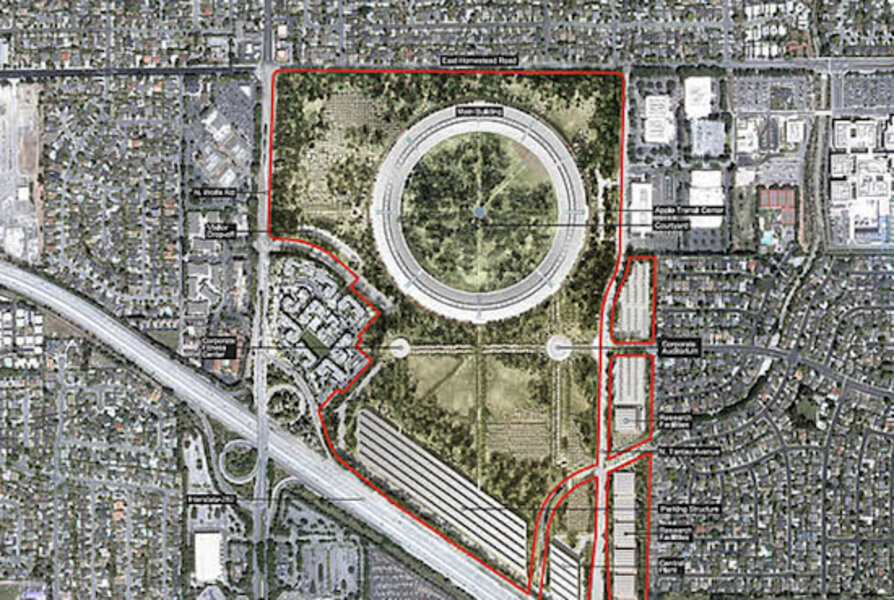Apple 'spaceship' campus gets nod from Cupertino city council
Loading...
Back in June, Apple released a lengthy report on "Apple Campus 2," otherwise known as the Apple "spaceship" – a massive, four-story, futuristic-looking complex that will eventually sprawl across 2.8 million square feet of prime Cupertino, Calif., real estate.
According to Apple, among the benefits of the spaceship are more jobs for locals; an additional $32 million in revenue from property taxes; and one-time construction period revenues of $38.1 million.
And now, according to the San Jose Mercury News, the Cupertino City Council – in front of a "standing-only" crowd – has unanimously signed off on the new campus, which is set to open in 2016.
"As my mom used to say, 'don't bite the hand that feeds you,' " area resident Carol Baker said at the meeting, the San Jose Mercury News reports. "If we don't honor Apple with this building, they'll leave. There's no reason for them to stay here and be loyal to a community that doesn't support them. But if they left, it would be a disaster for the city."
Some locals have worried about increased traffic and the environmental impact of such a large facility. Meanwhile, critics such as Christopher Hawthorne of the Los Angeles Times, have panned the look of the new campus. The building, Hawthorne has written, "keeps itself aloof from the world around it to a degree that is unusual even in a part of California dominated by office parks. The proposed building is essentially one very long hallway connecting endlessly with itself."
Still, Apple has repeatedly pledged to Cupertino that it would honor Apple's long relationship with the city – and given how much Cupertino stands to earn from the new building, it was unlikely from the start that the council would turn the company down.
"Steve [Jobs] transformed Apple into one of the most innovative companies in the world and we understand the responsibilities that come from carrying his legacy forward with this project," Dan Whisenhunt, Apple's head of real estate and facilities, told the council, according to the San Jose Mercury News. "We've designed it with the same care and attention to detail as we do with all Apple products."







